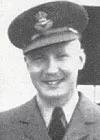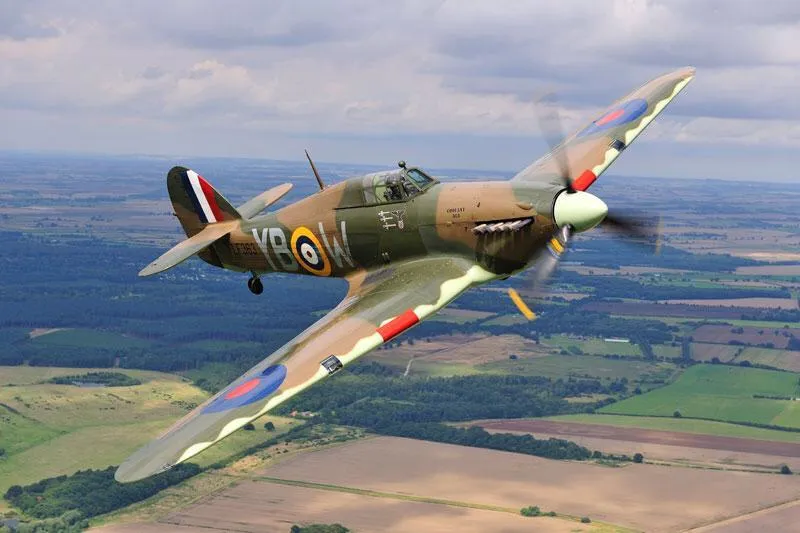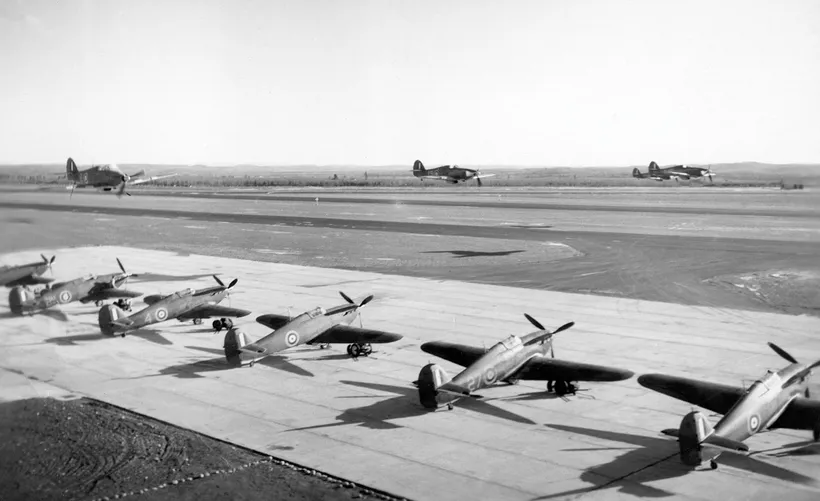Flying Officer Gagnon had previously been employed by the Royal Bank of Canada at the 25th Avenue branch in his hometown of Vancouver, British Columbia from August 21, 1936 until he enlisted in the RCAF September 25, 1940
Gagnon, Lionel Edmond Charles (Flying Officer)
Killed in Flying Accident 1943-February-16


Birth Date: 1918-December-10
Born: Vancouver, Greater Vancouver Regional District, British Columbia, Canada
Parents: Son of Edmond Ulric Joseph and Rose de Lima Gagnon, of Vancouver
Spouse: Husband of Mavis Cecile(nee Kern) Gagnon, of Vancouver
Home: Vancouver, British Columbia
Enlistment:
Enlistment Date: 1940-September-25
Service
RCAF
Unit
1 (OT) OTU- Operational Training Unit
Base
Bagotville, Quebec, Canada
Rank
Flying Officer
Position
Pilot
Service Numbers
J/4865
This incident involved multiple aircraft:
- Hurricane Mk. XII Serial: 5444
- Hurricane Mk. XII Serial: 5644
All the above aircraft in the above list are referenced in this report.
Accident Card - Hawker Hurricane Mk. XII serial:5644
This accident involved 2 aircraft on 1943-February-16. They are: Hawker Hurricane IIB s/n 5644, Hawker Hurricane IIB s/n 5444.
This accident involved 2 people. Gagnon EC, Gilson AI
This accident had 2 fatalities. Flying Officer Arnold Irwin Gilson RCAF Killed in Flying Accident service no:J/12698 Hurricane 5444,Flying Officer Lionel Edmond Charles Gagnon RCAF Killed in Flying Accident service no:J/4865 Hurricane 5644
Mission
Hurricane Mk. XII 5644
Operational 1943-February-16 to 1943-February-16
1 (OT) OTU (RCAF) RCAF Bagotville
1 Operational Training Unit, Bagotville, Quebec. Hurricane aircraft 5644 and 5444 were flying in formation at 12,000 feet when they collided in mid-air between St Anne and St Honore, Quebec. Both Flying Officer L E C Gagnon (RCAF) flying Hurricane 5644 and the pilot of Hurricane 5444, Flying Officer A I Gilson (RCAF) was killed in this flying accident
Hurricane serial: 5644

Source BBMF
The Hawker Hurricane is a single-seat fighter aircraft of the 1930s"“1940s that was designed and predominantly built by Hawker Aircraft Ltd. for service with the Royal Air Force (RAF). The Hurricane developed through several versions, as bomber-interceptors, fighter-bombers, and ground support aircraft in addition to fighters. Versions designed for the Navy were popularly known as the Sea Hurricane, with modifications enabling their operation from ships. Some were converted to be used as catapult-launched convoy escorts. By the end of production in July 1944, 14,487 Hurricanes had been completed in Britain and Canada.
A major manufacturer of the Hurricane was Canadian Car and Foundry at their factory in Fort William (now Thunder Bay), Ontario. The facility's chief engineer, Elsie MacGill, became known as the "Queen of the Hurricanes". The initiative was commercially led rather than governmentally, but was endorsed by the British government; Hawker, having recognized that a major conflict was all but inevitable after the Munich Crisis of 1938, drew up preliminary plans to expand Hurricane production via a new factory in Canada. Under this plan, samples, pattern aircraft, and a complete set of design documents stored on microfilm, were shipped to Canada; the RCAF ordered 20 Hurricanes to equip one fighter squadron and two more were supplied to Canadian Car and Foundry as pattern aircraft but one probably did not arrive. The first Hurricane built at Canadian Car and Foundry was officially produced in February 1940. As a result, Canadian-built Hurricanes were shipped to Britain to participate in events such as the Battle of Britain. Canadian Car and Foundry (CCF) was responsible for the production of 1,451 Hurricanes. Wikipedia and Harold A Skaarup Web Page
Aircraft Images
Hurricane 5444
Hurricane Mk. XII 5444
Delivered to Eastern Air Command, for use at No. 1 (F) Operational Training Unit at RCAF Station Bagotville, Quebec. Category B crash at Bagotville aerodrome at 15:15 on 10 January 1943. Category A crash north of St. Anee and St. Honore, Quebec at 16:10 on 16 February 1943, same pilot (Flying Officer E.C. Gagnon). Second crash was a mid-air during formation attacks at 12,000 feet, pilot killed. Application for write off submitted on 19 February 1943, to No. 4 Repair Depot at RCAF Station Scoudouc, NB.1942-08-25 Taken on Strength 2019-08-20
1943-January-10 Accident: 1 Operational Training Unit Loc: Aerodrome Names: Gagnon
1943-February-16 Accident: 1 Operational Training Unit Loc: Between St Anne & St Honore Quebec Names: Gagnon | Gilson
1943-05-05 Struck off Strength Struck off, reduced to spares and produce 2019-08-20
Hurricane 5644
Hurricane Mk. XII 5644
First used by No. 1 Operational Training Unit at RCAF Station Bagotville, Quebec. Category A crash at 16:10 on 16 February 1943, near St. Anne and St. Honore, Quebec. While conducting practice attacks at 12,000 ft, #5644 and #5444 collided with fatal results. Flying Officer E.C. Gagnon in #5644 and Flying Officer A.I. Gilson in #5444 were both killed. The wreckage was sent to No. 4 Repair Depot on 19 February 1943 for write off.1942-12-02 Taken on Strength 2019-08-20
1943-February-16 Accident: 1 Operational Training Unit Loc: Between St Anne & St Honore Quebec Names: Gagnon | Gilson
1943-02-16 Accident Category A 2022-02-03
1943-05-05 Struck off Strength written off, reduced to spares and produce 2022-02-03
Unit Desciption
1 (OT) OTU (1 Operational Training Unit)
The Operational Training Unit (OTU) was the last stop for aircrew trainees. They spent 8 to 14 weeks learning to fly operational aircraft (Hawker Hurricane or Fairey Swordfish, e.g.). The instructors had experience in actual operations, and often were posted to OTUs after their operational tour.